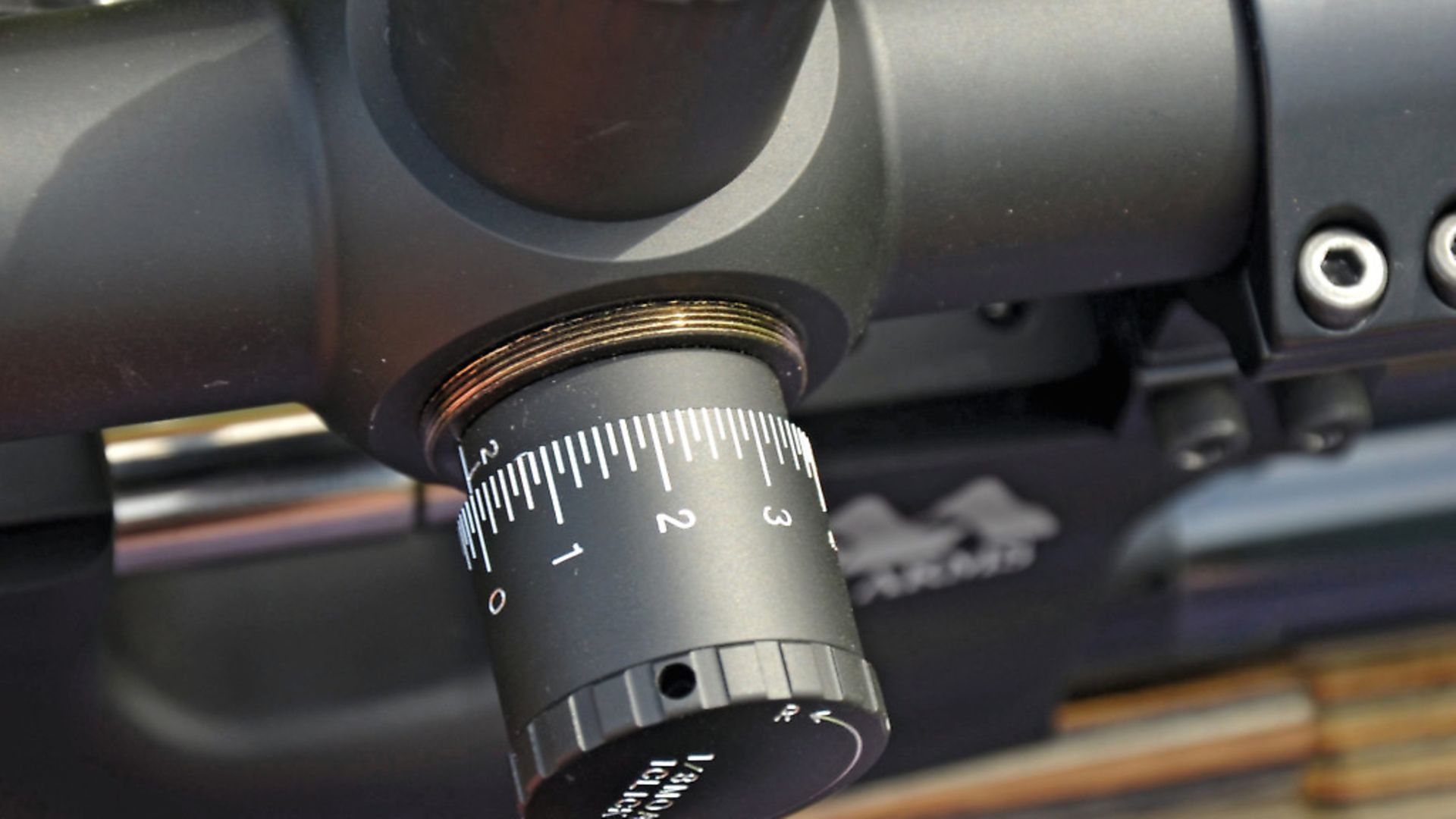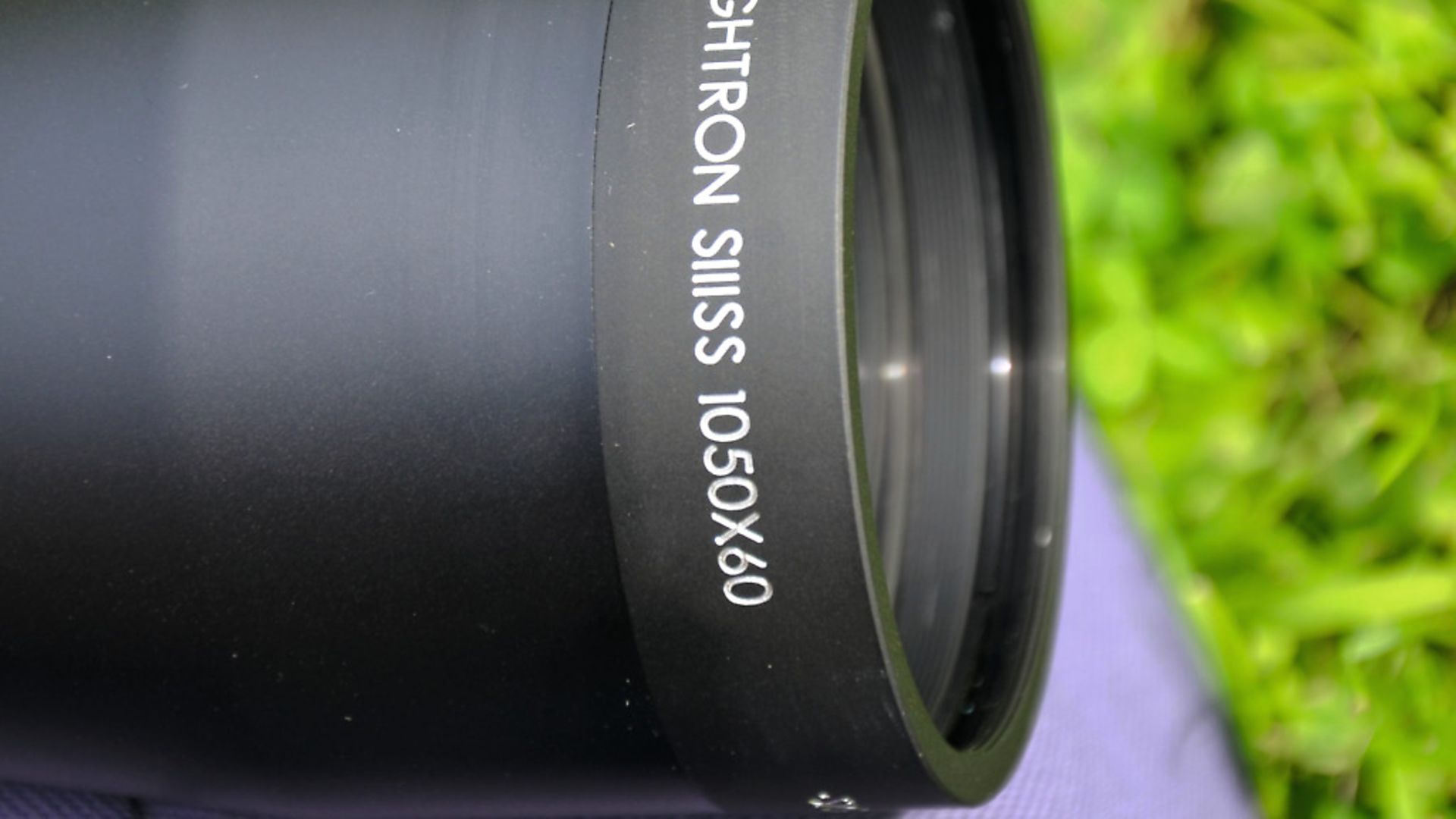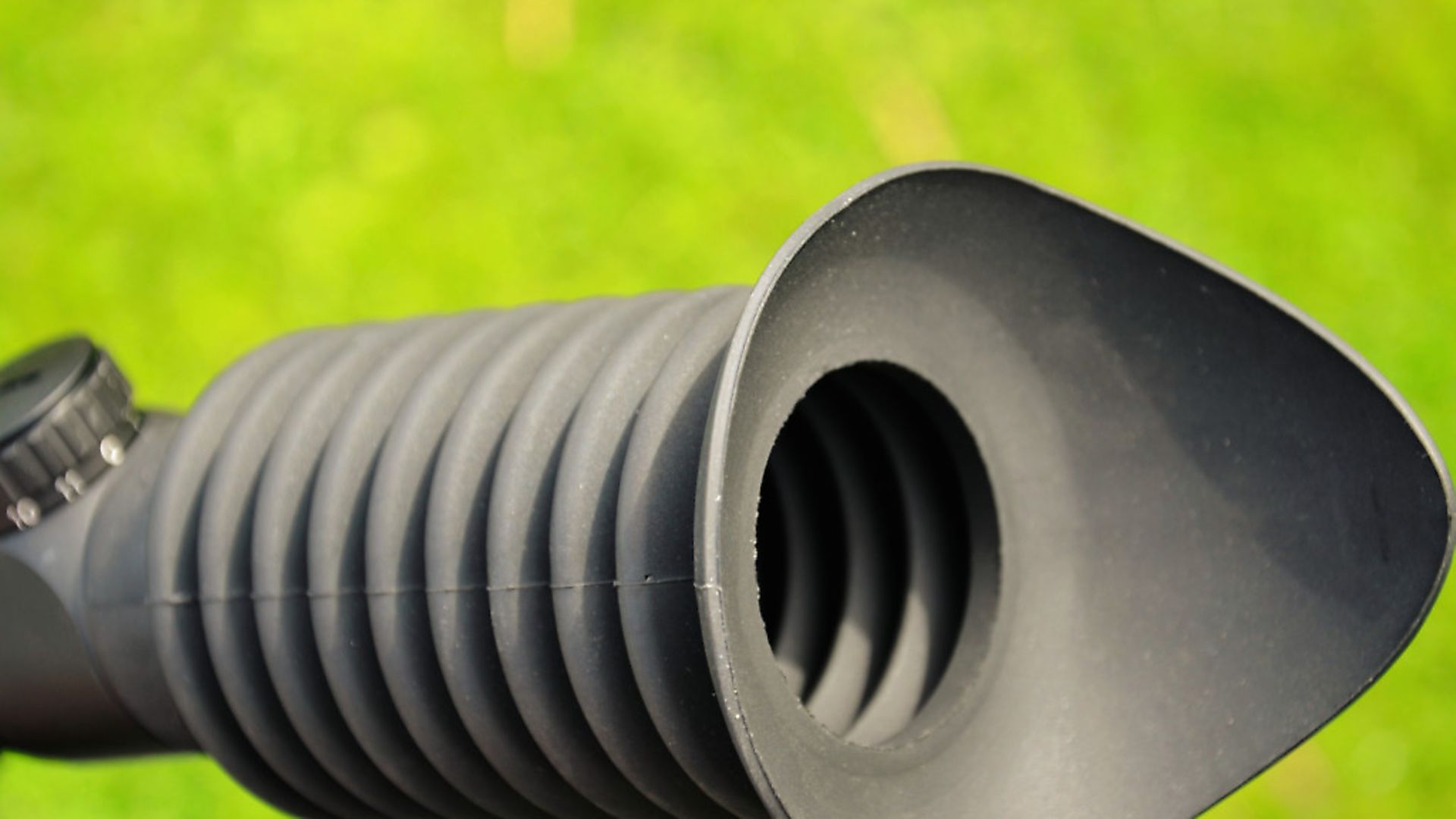Mark Camoccio brings us part one of his review of this remarkable optic
 credit: Archant
credit: Archant
Field target is an exacting sport, and is open to anyone to enjoy at their own level. However, for the top exponents on the competition circuit who are serious about bringing home silverware, investment in ultra-precise, technical kit is pretty well a given. Once the small matter of a super-accurate rifle has been sorted, it’s time to throw resources at some glassware capable of rangefinding targets out to 55 yards.
Pedigree
Several scope manufacturers jostle for position in FT circles, and Sightron is one of the big names that has earned a loyal following in recent years, off the back of serious results at the sharp end. John Costello’s World FT title in 2013, using an SVSS 10-50X60 model, put the brand firmly centre stage, and on test here is the latest version of the later SIIISS model, again a dedicated FT scope aimed at competition shooters. John’s SVSS was built around the larger 34mm body tube, but this new SIIISS features a 30mm tube, which for a start helps to reduce weight dramatically from 45oz to around 30oz.
So, let’s first confirm the specification of this new model, and then take a closer look at each aspect.
The 10-50 denotes variable magnification between 10x and 50x, and the ‘60’ confirms a front objective bell of 60mm. ‘IR’ indicates an illuminated reticle, and ‘MOA’ to’ Minute of Angle’ values and the MOA2 reticle fitted. The scope comes well packaged and you also get a 5-inch side wheel, a large padded scope bag, and a rubber push-fit scope enhancer inside the box.
 credit: Archant
credit: Archant
Preparation
So, first task is to check that the reticle and target are in focus. Use the rear quick focus to adjust the image, and fine tweak until the reticle and target are clear at the same time. Now we need to fit the rubber enhancer. This is a push-fit onto the rear ocular lens. It is a bit of a fiddly job, and needs to be done by holding the rubber fitting firstly at the right angle, bearing in mind the wide section that cups the eye socket, whilst trying not to unsettle the rear focus ring that we have just set. The cup then needs to be pushed into place far enough on to set the correct eye relief, too. It’s not rocket science, as they say, but it is awkward.
Now it’s time for mounting so the 5-inch parallax adjuster side wheel needs to be fitted. First, check that the three small, Allen-headed screws are slackened enough so that they don’t foul the inner circle, push the wheel over the side parallax knob until it sits fully on, and firmly in place, and then gently tighten all three screws alternately. The initial position of the wheel doesn’t matter, since it comes with no range markings whatsoever. This makes sense because many manufacturers’ markings are often out by a few yards, and the final settings are down to personal eyesight in any case. This Sightron effectively gives the shooter a blank canvas, and allows us to set everything just so.
 credit: Archant
credit: Archant
OK, in theory, the larger 34mm tube utilised in several FT scopes these days allows for more mechanical adjustment range to be squeezed inside, yet in practice, with many shooters using adjustable mounts and super-high scope rails, this aspect becomes largely academic. ‘Centring’ the optical system is popular, where the turrets are set to the mid-point of their adjustment, positioned in the mounts, and then the scope is actually zeroed via an adjustable mount system, is again popular. Either way, this new SIII has plenty of adjustment range in both windage and elevation, for conventional mounting. High 30mm ring mounts are the ticket, to cope with that hefty 60mm objective.
Turret tracking
‘Target’ turrets come as standard, and these both have screw caps and adjustment values in 1/8MOA. Markings are pin-precise and marked from 0 through to 9, with plenty of increments between. Crucially, the turrets are resettable so that you can set zero at a desired range in the usual way, then slacken off the small turret screws, quickly rotate the loose turret – which is now totally free of the adjustment spindle – position it at zero, and then re-tighten the turret screw. Your initial reference point, that everything else stems from, is now set.
Next month, I’ll conclude the report and we’ll see how this scope shapes up where it matters.
Specification:
Model: SIII SS 10-50X60 FT IRMOA
Sightron model ref: 25010
Manufacturer: Sightron
Country of origin: Japan
Magnification: Variable 10-50x
Objective Lens Diameter: 60mm
Reticle: MOA2 illuminated (MOA @ 24X magnification)
Weight: 30.1oz
Length: 16.9inches
Click adjustment: 1/8 MOA @ 100 yds
Field of View: 9.6-2.2ft @ 1000 yds
Eye relief: 3.8 – 4.5 inches
Body Tube: 30mm
Min Focus: 12 yds on test/10yds stated
Turret type: Screw-cap target turrets
Focal plane: Second
Finish: Matte black
Turret movement: Windage: 1 full turret rotation = 80 clicks/5.75 revolutions possible
Elevation: 1 full turret rotation = 80 clicks/5.75 revs possible
Retail price: £1375 approximate guide price; including side wheel, rubber scope enhancer and lens protection bag
Options: Mil-hash recticle with .05MRAD click values
Contact: Visit the Optics Warehouse website or call 01803 611895
Keep your optics clean with our tips here.